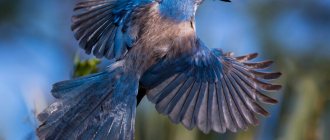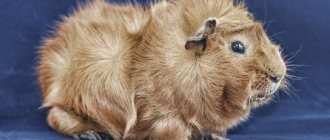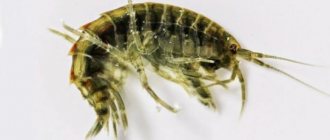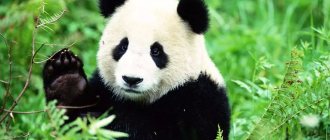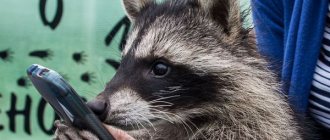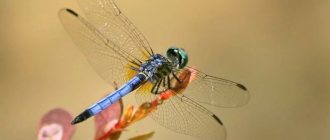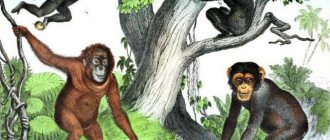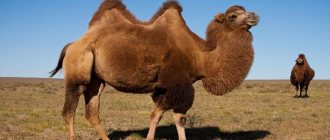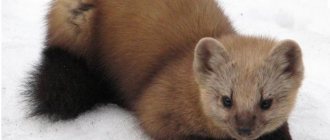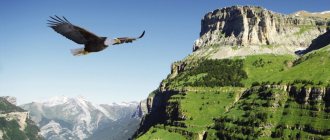The predatory family of mustelids includes a large number of phylogenetically related species, which differ quite significantly in body structure and lifestyle.
The predominant number of representatives are small and very small, there are, of course, medium ones, but there are not many of them. The body length of such animals ranges from fifteen to 120 (sometimes up to 150) cm. The weight of representatives varies from 100 grams to 40 kilograms. As a rule, their body is very elongated and quite flexible. A predator of the mustelid family with a short and massive body is a rather rare phenomenon.
Representatives of the family are distinguished by developed hair. In many species that live in the north in winter, it is very fluffy and thick. In the south, some representatives have a body covered with coarse, almost bristly hair. The colors can be different: spotted, plain, striped. It happens that there is an animal of the mustelid family whose fur is lighter underneath than on top. Depending on the season, representatives may change in thickness and fluffiness of fur. Some species change their color to snow-white in winter.
As a rule, all mustelids lead a terrestrial existence, climb trees well, some can dig quite deep burrows, and also get food from underground.
Mustelids are widespread. They are found on all continents except Australia.
The mustelidae family is one of the richest in the number of genera and species in the order of predators. It contains approximately 70 species, which are grouped into 25 genera and five subfamilies. The first of them is called martens. It includes approximately 33 species and ten genera.
Ermine
The ermine is similar in appearance to the weasel, with an average body length of 30 cm.
This animal is predatory and feeds on rodents. Sometimes it destroys nests. In times of hunger, it can eat frogs; if they are not available, then it eats garbage and juniper berries. It reproduces once a year, the duration of pregnancy is approximately 9.5 months. There is an average of five babies in a litter.
This representative is active at different times of the day.
Taxonomy
Representatives of the mustelid family are an important element of the food chain - they regulate the number of small rodents and birds.
Ferrets and weasels living near populated areas steal poultry and their eggs, causing damage to agriculture. They themselves serve as food for wolves, foxes, snakes, eagles, hawks and owls. Some individuals carry infectious diseases, including rabies.
The thick and soft fur of mustelids is used to make fur coats. The most popular commercial fur animals are mink and sable.
Ferrets
Ferrets are very close to the norm. There are three known types of them: steppe, blackfoot and black. The first is the largest, body length up to 56 cm, weight up to two kg. Slightly smaller black ferrets. Their body length is 48 cm and their weight is no more than 1.5 kg.
The main diet of all three species is rodents. The black ferret, as a rule, prefers mice and voles, while the steppe ferret prefers hamsters and gophers. Prairie dogs are what the Blackfeet prefer.
These representatives of the family (especially the steppe ones) live near lakes and rivers.
General characteristics of the family
There are approximately 57 species in 24 genera in the Mustelidae family. This includes:
- weasels, minks and hori (23 species in 7 genera);
- martens (8 species in two genera);
- wolverine (1 species);
- otters (13 species in 7 genera);
- badgers (10 species in 6 genera).
Until recently, skunks were also classified as mustelids, but genetic and molecular studies have given grounds to classify them as a separate family.
The size of mustelids varies greatly. For example, the body weight of a weasel does not exceed 60 grams, while the body weight of a sea otter (sea otter) can reach 45 kg.
Almost all mustelids are characterized by an elongated body shape and short, digitigrade or plantigrade, five-fingered limbs. Species adapted to living in an aquatic environment have swimming membranes between their toes.
Most members of the family are distinguished by long, sharp fangs and cutting carnassial teeth. The maximum number of teeth in mustelids is 38.
The calling card of the family in question is thick fur with a soft undercoat. Its color can be different, and its splendor and thickness depend on the season - in winter it is even softer and thicker.
Mustelids are found on every continent except Antarctica and Australia. Three species have been introduced to New Zealand. Their habitats are very diverse. These are forests, mountains, deserts and semi-deserts, steppes, tundra.
Most lead a terrestrial lifestyle, many climb trees well, and some know how to dig deep holes. Some species have, to one degree or another, adapted to the aquatic lifestyle.
By nature of nutrition, most species are carnivores, but sometimes they also eat plant foods.
Mustelids are characterized by a predominantly solitary lifestyle. Only a few otters and the common badger show signs of sociality. Usually, when meeting relatives, representatives of the family show hostility. Only during the breeding season does a temporary truce between the sexes occur.
All mustelids have a developed communication system based on the transmission of chemical signals. These animals leave scent marks in the form of urine, feces and skin gland secretions in easily visible places. The Latin name for mustelids, Mustelidae, refers to “musk,” the strong-smelling secretions of the anal glands. This musty smell, characteristic of mustelids, is useful to them in many ways, for example, to mark the place where meat is hidden for future use, and, in addition, to make this meat unappetizing to other animals, to attract mating partners, to “stake out” a hunting area, to warn strangers and prevent attacks from enemies.
As for reproduction, mustelids are characterized by an extended gestation period. For example, in stoats and long-tailed weasels, implantation of fertilized eggs occurs almost a year after mating. The American mink, unlike the European mink, also has a delay in implantation, but only by 7-30 days. And with the ligation, the timing of the birth of the cubs depends on the weather preceding implantation. Probably, the delay in fetal development allows females to vary the date of birth of the cubs, timing it to the most favorable conditions.
Martens
Now we will talk about stone and pine martens. These animals are much larger than ferrets. The body length of the stone marten is on average 45 cm, and its weight is no more than 2.5 kg. Lesnaya is a little smaller. Its body length is on average 44 cm, and its weight ranges from 750 to 1500 grams. The body of martens is strong, slender, the ears are large and erect. The differences between these species are in the structure of the teeth and skull. A more southern species is the stone marten.
As the name implies, the forest one lives in forests littered with dark coniferous and mixed ones. Sometimes the stone one lives in such areas, but more often it can be seen on treeless rocky slopes. As a rule, they are active at night, although they can also be found during the day.
The pine marten eats rodents and sometimes hares. The stone one eats the same way, but in its diet the lion's share is occupied by plant foods. The rut occurs between June and August. An average of five babies are born per litter
Sable
The sable has a very flexible body and short legs, which is why it constantly stands with a strongly arched back
The sable is an inhabitant of the taiga zone; it prefers difficult-to-pass forest areas with windbreaks, where there are many shelters and suitable places for hunting. This is a terrestrial animal and rarely climbs trees. It feeds on rodents, birds, and loves pine nuts. In winter, it sneaks up on wood grouse, black grouse and hazel grouse spending the night in snow holes. Each sable has its own hunting territory, which it protects from the invasion of other predators - not only sables, but also martens and stoats. The animal makes its lair under trees, stones, and in hollows close to the ground. Due to its valuable fur, sable was used by the beginning of the 20th century. was practically exterminated, for the sake of its preservation in 1916 the first nature reserve in Russia was created - Barguzinsky. Currently, the sable population has recovered.
Interesting Facts
Amur Travel is an international tourism forum. The second time it was held in July 2022 in the city of Zeya. Kharza was chosen as the emblem. An elegant, fast animal, as if born to symbolize gatherings of connoisseurs of Far Eastern nature. There was controversy over the name. Until the last moment, a choice was not made among the options: Amurka, Taiga, Deya. After voting on the Internet, the forum's mascot began to bear the name Taiga.
In the summer of 2022, a rare event occurred at the Khabarovsk Territory Zoo - a harza living in captivity gave birth to offspring: two males and a female. Two years ago, the same event ended tragically - the mother did not feed the babies, they died. The current cubs are lucky - the female Kharza accepted them, the prosperous future of the puppies is beyond doubt.
Biologists believe that the yellow-breasted marten is not in danger of extinction. She lives in a large area. The number of animals is stable and does not cause concern. What is recorded in the International Red Book. But our country is affected by the northern border of the harza range. At the edge of its habitat, its numbers are significantly lower. Therefore, the harza was listed in the Red Book of the Far Eastern Federal District in 2007 as an endangered species.
Natural enemies
In their natural environment, martens do not have many enemies, since catching the nimble predator is not easy. In most cases, larger animals and birds attack babies, weakened or sick animals.
Recommended by topic
Mole Leopard Arctic Fox
Natural enemies:
- wolf;
- owl;
- lynx;
- puma;
- wolverine;
- eagle;
- ferret.
Animals often compete with each other for prey and territory. For example, American martens can purposefully kill their relatives in order to free up a territory, and yellow-breasted harsi hunt sables. And only the mountain marten does not conflict with other species. Most likely, this is due to the fact that the species prefers to eat insects and plant foods, and therefore does not see competitors in other brothers.
What do they eat?
Recommended by topic
Fox Panda Lynx
The diet depends on the type and habitat of otters, but the basis is fish and other inhabitants of water bodies. One individual can eat about 10% of its own weight. For example, a giant otter can eat about 3.5 kg of fish per day, and smaller American representatives from 1 to 2 kg. It is noteworthy that otters eat small fish and crustaceans directly in the water, lying on their backs and holding the prey with their paws, while they prefer to drag larger fish ashore.
Diet:
- Fish: carp, pike, gobies, minnows, rotans, catfish, perch, roach, etc.
- Small rodents: water voles, rats, baby beavers.
- Insects: large caddisfly larvae, dragonflies.
- Small birds and chicks: ducks, waders, seagulls.
- Amphibians, crustaceans, reptiles and amphibians: frogs, lizards, snakes, toads, turtles, mollusks, crayfish, crabs.
The size of prey depends on the species.
For example, giant otters are the dominant predator in their habitat and hunt in groups. They can easily handle an anaconda or a caiman. Question to the expert
How long can otters stay underwater?
Otters are excellent swimmers and can spend 2 to 4 minutes underwater.
Care and maintenance at home
Keeping exotic animals at home has become quite a popular activity. No one is surprised by a ferret living in a city apartment. Kharza is less common as a pet. But keeping her is no more difficult than a cat. As more people want to keep harza in their homes, the likelihood increases that a new species will appear in the future - domestic harza .
Taming the Horza has been tested many times and is always successful. By nature it is a fearless, self-confident predator. Kharza has never been particularly frightened by people, and she considers dogs her equal. When taking a kharza into your home, you should remember several features of this animal:
- In a moment of danger, a horse can emit a repulsive odor.
- Kharza is a marten . The predatory instinct in her is ineradicable. But, like a cat, she is able to get along even with birds.
- This animal is very active and playful. The apartment or house where the predator lives should be spacious. It is better to remove breakable objects from the habitats of the harza.
- The Ussuri marten should be trained to use the tray from the first weeks after birth.
- A kharza living in an enclosure will, in its habits, be closer to a wild predator than to a domestic one.
When feeding an animal, it is worth remembering that it is a predator. Therefore, the main component of the food is meat, preferably not fatty. In addition to raw beef or chicken, boiled meat pieces are suitable. Good protein foods are offal: liver, lung, heart. Vegetables, raw or stewed, must be added to the bowl.
The serving volume is calculated as for an active dog. Approximately 20 g per 1 kg of animal weight. You can feed the harza 1-2 times a day. Yellow-breasted martens have a habit of hiding uneaten pieces for a rainy day. Therefore, you need to watch how the meal ends. Reduce the portion if there are uneaten leftovers.
Feeding
The animal must be fed strictly according to the schedule; uneaten food must be removed from the cage. Usually, the animals get used to the regime in a short time and wait for food to be given. Subsequently, it is necessary to ensure that the animal is not afraid to eat food in your presence. It is advisable, at each feeding, to sit without moving near the cage, avoiding unexpected noise and sudden movements and noises. It is necessary to do this for a certain time, until the animal completely stops avoiding the person.
